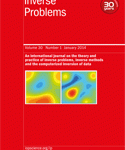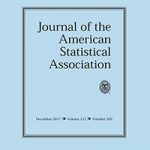SCIENTIFIC HIGHLIGHTS
SCIENTIFIC HIGHLIGHTS
Selected papers by our scientists
In this new section of Penta, we would like to highlight the best scientific papers among those sent to us by the BGSMath community (authors in bold are BGSMath members). If you feel one of your published papers is especially relevant and would like to see it highlighted in the newsletter, please send it to highlights@bgsmath.cat, together with a brief assessment of its scientific relevance. Your proposal will be received by the Scientific Advisory Board, who will select 3/5 of them for any given Penta issue.
 M. Calvo-Schwarzwälder, M.G. Hennessy, P. Torres, T.G. Myers, F.X.Alvarez
M. Calvo-Schwarzwälder, M.G. Hennessy, P. Torres, T.G. Myers, F.X.Alvarez
A slip-based model for the size-dependent effective thermal conductivity of nanowires
Int J Heat Mass Transf. 91 (2018), 57-63
Summary by the authors
 A. Cordón-Franco, D. Fernández-Duque, J. J. Joosten, F. F. Lara Martín
A. Cordón-Franco, D. Fernández-Duque, J. J. Joosten, F. F. Lara MartínPredicativity through Transfinite Reflection
J. Symb. Log. 82(3) (2017), 787-808
Summary by the authors
In the paper we give a characterization of the formal second order number theoretical system ATR_0 (Arithmetical Transfinite Recursion) in terms of reflection principles (whatever is provable, is true) over a rather weak base theory. This new result extends results from the seventies by Kreisel and Levy and opens up the way to ordinal analysis of stronger second order arithmetical theories by means of transfinitely iterating adding consistency statements to a weak base theory.
 J. J. Muñoz, D. Amat, and V. Conte
J. J. Muñoz, D. Amat, and V. Conte
Computation of forces from deformed visco-elastic biological tissues
Inverse Problems 34 (4) (2018).
Summary of the authors
This article considers the modelling of embryo development and computation of mechanically optimal forces.
 David Rossell & Francisco J. Rubio
David Rossell & Francisco J. Rubio
Tractable Bayesian variable selection: beyond normality
J Am Stat Assoc. (2017)
Summary by the authors
 Henri Darmon & Victor Rotger
Henri Darmon & Victor RotgerDiagonal cycles and Euler systems II: The Birch and Swinnerton-Dyer conjecture for Hasse-Weil-Artin L-functions
J. Amer. Math. Soc. 30 (2017), 601-672
Summary by the authors
It is the first important advancement in the Birch-Swinnerton-Dyer Conjecture for elliptic curves of rank 2. The most important contributions to this conjecture before this one we the theorems by Coates, Wiles, Gross, Zagier, Kolyvagin and Zhang, that were limited to rank 0 and 1.
